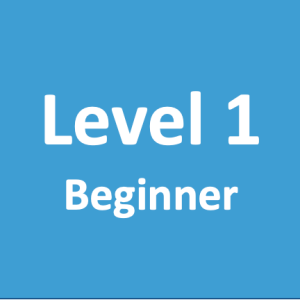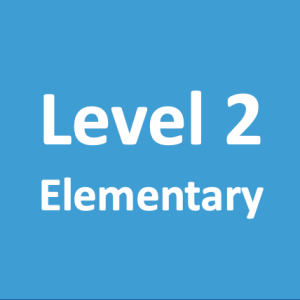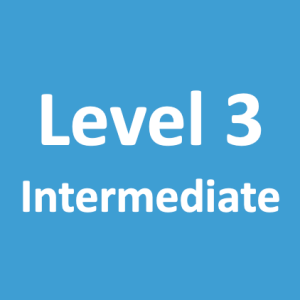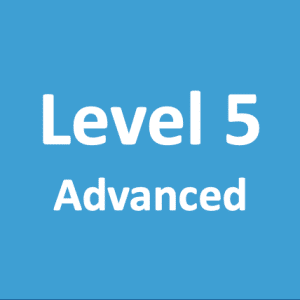Video English Lesson: Bren’s Practical English #008
Hello I’m Jane at DailyStep English and welcome to our Audio Blog!
This week Brendan is going to give you a video lesson about playing the guitar, so you can learn some of the vocabulary associated with playing and recording music.
This is great for all levels of English learner, as music is a universal pleasure and we all need to know how to talk about it.
Also, if you are taking IELTS or any other English exams, you may need to know this vocabulary for an exam question so learn it well.
So, here is Brendan showing you around his music studio (which I think is a bit of a mess, but he seems to like it that way!) and demonstrating some techniques on the guitar.
Listen also to his accent, as Brendan is from Manchester in the North of England, and his accent is quite different from mine.
Bren’s Practical English #008: Playing the guitar
(by Brendan O’Connell at DailyStep.com)
Hi, today I’m working in my recording studio[1]. In this studio I’ve got lots of equipment for recording.
I’ve got a computer with a music program[2] on (it), I’ve got speakers[3] so I can hear the music, I’ve got a mixing desk[4] so I can plug the microphones[5] and guitars into the computer, I’ve also got a pair of headphones[6] so I can listen to the music and I’ve got a keyboard[7] and a piano – but the best thing, the thing that I like best are my guitars.
Now, I first started playing guitar when I was about… I think I was about fourteen and since then I’ve never really put it down. It’s something that I love doing.
Now, this guitar is an acoustic guitar[8], it’s a Spanish, Spanish classical guitar[9] and the first thing I have to do is tune it up[10].
So, I have to make the note[11] be the correct pitch[12]. So, that’s in tune[13] now.
There are two ways of playing the guitar. You can pick[14] the guitar or you can strum[15] it.
So, whenever I get a bit stressed or a bit bored I come up here, I pick up the guitar and I start to play. OK, this is a different type of guitar – this is an electric guitar[16] and you need an amplifier to play it.
So, I plug it into[17] the amplifier and it’s ready to play. When I’m playing the electric guitar I often use a plectrum[18], which is a little plastic thing and you use that to play the guitar.
So, let’s go. I think learning to play a musical instrument is very much like learning a language.
You can never learn everything there is to learn, you can always learn more so really it’s a life long project.
Anyway, at the moment I’m working on a tune for DailyStep. The DailyStep theme tune[19]!
Here is Audio Word Study #085 on DailyStep.com
In today’s DailyStep Word Study, I’ll explain some of the specialist vocabulary that Brendan used in his video about playing the guitar.
If you are a musician or interested in music, or if you plan to take some English exams such as IELTS or Cambridge exams and may need to talk about music, then this Word Study is ideal for you! Knowing all these phrases will, of course, also improve your English listening skills.
1. recording studio = a place where music or spoken word is recorded (The most famous recording studio in Britain is the Abbey Road Studio, where the Beatles recorded all their records)
2. a music program = a piece of computer software which works as a virtual recording studio which you use to do multi-track recording and music production
3. speakers = loudspeakers; boxes that contain speaker cones which vibrate to produce sound
4. a mixing desk = an electronic interface used for plugging instruments or microphones into an amplifier or computer
5. microphones = devices used in recording or performance, for picking up and transmitting sound
6. a pair of headphones = a pair of small personal speakers, also just known as headphones or phones, which you wear against your ears
7. a keyboard = an electronic piano (note: a computer keyboard is the part where we can type letters and numbers)
8. an acoustic guitar = a guitar that produces sound from the vibrations in the sound box of the guitar and does not use any electronics
9. Spanish classical guitar = acoustic guitar with nylon or catgut strings
10. tune it up (phrasal verb: to tune something up) = put an instrument into the correct pitch so that musicians can play together without producing a horrible sound
11. note = one single musical sound, such as one string on the guitar or one key on the piano. A group of notes played at the same time is known as a chord
12. pitch = the frequency of a musical note. Notes at the left hand side of a piano are of a low pitch and at the right hand side they are high notes. In English we classify the notes as A, B, C, D, E ,F and G.
The in-between notes, played using the black keys on a piano, are known as sharps and flats. So, for example, we can play ‘A sharp’ or ‘A flat’.
13. in tune = at perfect pitch, as opposed to out of tune, which means ‘at the wrong pitch’ and therefore sounding unpleasant to the ear
14. (to) pick = (to) play individual strings on a stringed instrument, also known as finger picking or plucking
15. (to) strum = to play rhythmic chords on a stringed instrument
16. an electric guitar = a guitar that uses electronics to produce a sound (mainly associated with rock ‘n’ roll or pop music)
17. plug it in to the amplifier (phrasal verb: to plug something in) = to connect it with a plug to the amplifier (note: we can also plug something in to an electrical socket.)
18. a plectrum = a small triangular shaped piece of plastic used for plucking or strumming the guitar
19. theme tune = piece of music associated with a particular film, TV programme or, in this case, English learning programme! Theme tunes are often played at the beginning or end of a film or TV show.
Now, read and listen to this Audio Word Study again, and try speaking along with the audio file. That’s all for Audio Word Study #085 on DailyStep.com.
If you enjoyed my Audio Blog, please share it. Thank you 🙂
How to speak English fluently and understand fast English
DailyStep English Audio Lessons are designed to help you learn to speak and understand English at the speed that we speak it.
No matter how good your English is, you need to be able to follow a fast conversation in order to participate.
DailyStep English courses are fully accredited and you can get an internationally-recognised certificate for your CV or resume.
How to use your lessons:
How to slow the audio:
How to Start Daily Audio Lessons
✔ Daily Audio Lessons + Premium Audio in my Blog Library
✔ Your lessons never expire – you can take them again any time
✔ Change your level any time
✔ 100% happy or your money back!









